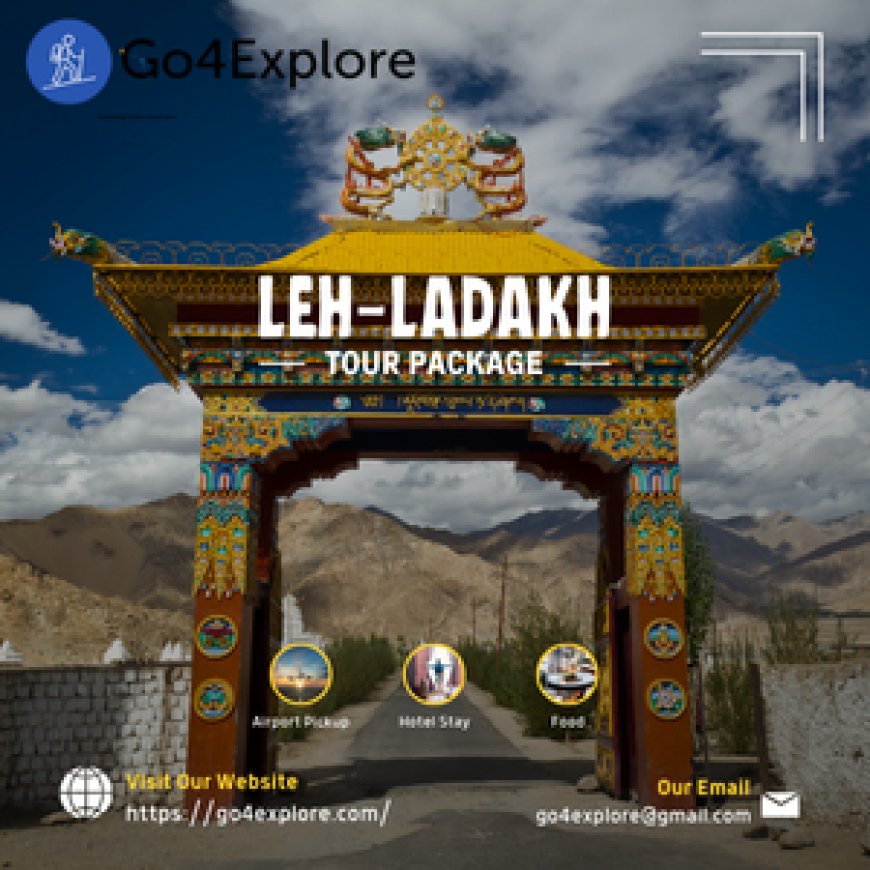Leh-Ladakh Located in the state of Jammu and Kashmir, Leh-Ladakh is the northernmost region in India. Known for its breathtaking landscapes, remote mountain passes, and Buddhist monasteries, Leh-Ladakh attracts travelers from all over the world seeking adventure, tranquility, and spiritual enrichment. Here are some key aspects that describe Leh-Ladakh:
-
Scenic Landscapes: Leh-Ladakh is renowned for its stark, barren beauty characterized by rugged mountains, deep valleys, and serene lakes. The region is dominated by the Himalayas and the Karakoram Range, with some of the world's highest motorable passes.
-
Cultural Richness: The culture of Leh-Ladakh is predominantly Tibetan Buddhist, and the region is dotted with ancient monasteries (gompas) such as Thiksey, Hemis, and Diskit. These monasteries not only serve as religious centers but also offer insights into the region's history and art.
-
Adventure Tourism: Leh-Ladakh is a paradise for adventure enthusiasts. Activities such as trekking, mountaineering, river rafting, and mountain biking are popular due to the challenging terrain and stunning vistas.
-
Pangong Lake: One of the most iconic attractions of Leh-Ladakh is Pangong Tso, a high-altitude lake situated at a height of about 4,350 meters. The lake is famous for its changing colors and was featured in the movie "3 Idiots."
-
Nubra Valley: Known as the Valley of Flowers, Nubra Valley offers a unique landscape with its sand dunes, monasteries, and the opportunity to ride double-humped Bactrian camels.
-
Chadar Trek: During winter, the frozen Zanskar River attracts adventurers for the challenging Chadar Trek, where trekkers walk on the frozen river amidst breathtaking winter scenery.
-
Local Cuisine: Leh-Ladakh offers a distinctive cuisine influenced by Tibetan and Kashmiri flavors. Traditional dishes like Thukpa (noodle soup), Momos (dumplings), and Butter Tea are popular among locals and tourists alike.
-
Challenges of Accessibility: Due to its high altitude and remote location, accessibility to Leh-Ladakh is limited to certain months of the year when the weather is favorable, typically from late May to September.
-
Cultural Festivals: Leh-Ladakh hosts several vibrant festivals throughout the year, such as the Hemis Festival and Losar (Tibetan New Year), which showcase traditional music, dance, and rituals.
-
Environmental Concerns: The fragile ecosystem of Leh-Ladakh faces environmental challenges due to increasing tourism and climate change, prompting efforts to promote sustainable tourism practices.
Overall, Leh-Ladakh offers a unique blend of natural beauty, cultural heritage, and adventure opportunities, making it a bucket-list destination for travelers seeking an unforgettable experience in the Himalayas.
